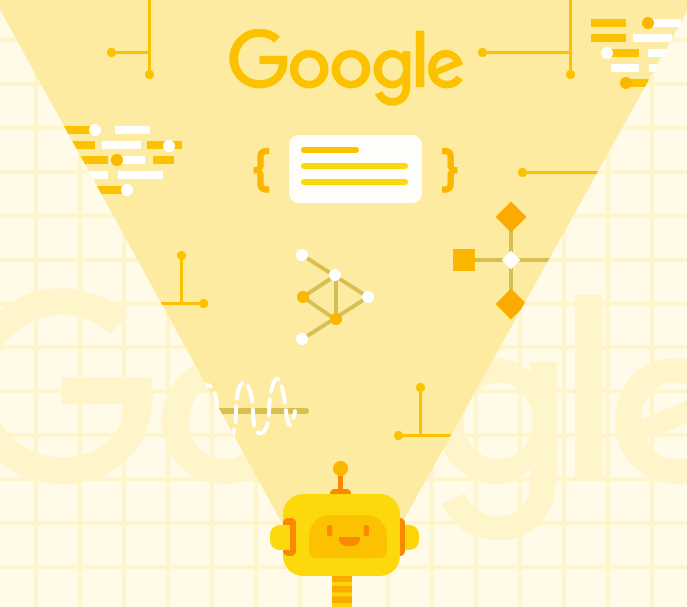We recently did a blogpost aboutGoogle’s new Algorithm – Rankbrain – which detailed, to understand user queries and also the intent behind such queries to produce featured snippets.
how Google is now using machine learning
In another recent article published on Wired, Cade Metz explains the way ‘Sentence Compression Algorithm’ is being used by Google as of this week, although the use of the algorithm to power featured snippets is limited to desktop search results only for now.
Therefore, Google’s Hand-fed AI is now providing featured snippets, and not just search results.
This algorithm is Google’s way of extracting the best answer that fit well with your query to be displayed as a featured snippet
Here’s how it works:
Ask the Google Search app: “Which is the fastest bird on Earth?”
“Peregrine falcon”, Google will tell you.
“According to YouTube, the peregrine falcon has a maximum recorded airspeed of 389 kilometers per hour.
That is indeed the correct answer to that question, and you would expect it to be from some online database.
You’d be surprised to know that Google didn’t fetch that data from some pre-fed database, but rather from a ‘Video’ published on YouTube. Google sourced this information from a Video on YouTube that lists the five fastest birds on Earth and extracted just the information you were looking for, without displaying the other four birds.
It will respond along similar lines if you ask, “Famous quotes from The Godfather”.
Clearly, Google has evolved from being just a search engine that fetches the links that might present the answer to your query –
Now, it fetches the RIGHT ANSWER for you.
Google answers these questions with the help of deep neural networks, a form of artificial intelligence that is rapidly transforming not just the search engine, but the whole of Google and along with it, the other giants of the internet like Facebook and Microsoft.
And of course, its use is not limited to featured snippets, but extends to Google Home, Google Assistant and more.
Here is a snippet to get you to the core of the matter, from the article on Wired:
Google answers these questions with the help from deep neural networks, a form of artificial intelligence rapidly remaking not just Google’s search engine but the entire company and, well, the other giants of the internet, from Facebook to Microsoft. Deep neutral nets are pattern recognition systems that can learn to perform specific tasks by analyzing vast amounts of data. In this case, they’ve learned to take a long sentence or paragraph from a relevant page on the web and extract the upshot—the information you’re looking for.
These “sentence compression algorithms” just went live on the desktop incarnation of the search engine. They handle a task that’s pretty simple for humans but has traditionally been quite difficult for machines. They show how deep learning is advancing the art of natural language understanding, the ability to understand and respond to natural human speech. “You need to use neural networks—or at least that is the only way we have found to do it,” Google research product manager David Orr says of the company’s sentence compression work. “We have to use all of the most advanced technology we have.”
When Barry Schwartz asked Glenn Gabe whether he noticed any changes with featured snippets, this is what he had to say-
Wrapping up here, all that we need to say in conclusion is – Brace yourselves, because real changes to search engine results are coming….

It looks like this time it’s going to be man vs machine when it comes to us SEO doing our job.
Update: As Google’s machine learning algorithm becomes more and more advanced, the need of the hour is to implement the necessary on-page SEO elements to take advantage of SERP features. Read our latest blog on why 2017 should be the year for Featured Snippets.
We recently did a blogpost aboutGoogle’s new Algorithm – Rankbrain – which detailed, to understand user queries and also the intent behind such queries to produce featured snippets.
how Google is now using machine learning
In another recent article published on Wired, Cade Metz explains the way ‘Sentence Compression Algorithm’ is being used by Google as of this week, although the use of the algorithm to power featured snippets is limited to desktop search results only for now.
Therefore, Google’s Hand-fed AI is now providing featured snippets, and not just search results.
This algorithm is Google’s way of extracting the best answer that fit well with your query to be displayed as a featured snippet
Here’s how it works:
Ask the Google Search app: “Which is the fastest bird on Earth?”
“Peregrine falcon”, Google will tell you.
“According to YouTube, the peregrine falcon has a maximum recorded airspeed of 389 kilometers per hour.
That is indeed the correct answer to that question, and you would expect it to be from some online database.
You’d be surprised to know that Google didn’t fetch that data from some pre-fed database, but rather from a ‘Video’ published on YouTube. Google sourced this information from a Video on YouTube that lists the five fastest birds on Earth and extracted just the information you were looking for, without displaying the other four birds.
It will respond along similar lines if you ask, “Famous quotes from The Godfather”.
Clearly, Google has evolved from being just a search engine that fetches the links that might present the answer to your query –
Now, it fetches the RIGHT ANSWER for you.
Google answers these questions with the help of deep neural networks, a form of artificial intelligence that is rapidly transforming not just the search engine, but the whole of Google and along with it, the other giants of the internet like Facebook and Microsoft.
And of course, its use is not limited to featured snippets, but extends to Google Home, Google Assistant and more.
Here is a snippet to get you to the core of the matter, from the article on Wired:
Google answers these questions with the help from deep neural networks, a form of artificial intelligence rapidly remaking not just Google’s search engine but the entire company and, well, the other giants of the internet, from Facebook to Microsoft. Deep neutral nets are pattern recognition systems that can learn to perform specific tasks by analyzing vast amounts of data. In this case, they’ve learned to take a long sentence or paragraph from a relevant page on the web and extract the upshot—the information you’re looking for.
These “sentence compression algorithms” just went live on the desktop incarnation of the search engine. They handle a task that’s pretty simple for humans but has traditionally been quite difficult for machines. They show how deep learning is advancing the art of natural language understanding, the ability to understand and respond to natural human speech. “You need to use neural networks—or at least that is the only way we have found to do it,” Google research product manager David Orr says of the company’s sentence compression work. “We have to use all of the most advanced technology we have.”
When Barry Schwartz asked Glenn Gabe whether he noticed any changes with featured snippets, this is what he had to say-
Wrapping up here, all that we need to say in conclusion is – Brace yourselves, because real changes to search engine results are coming….

It looks like this time it’s going to be man vs machine when it comes to us SEO doing our job.
Update: As Google’s machine learning algorithm becomes more and more advanced, the need of the hour is to implement the necessary on-page SEO elements to take advantage of SERP features. Read our latest blog on why 2017 should be the year for Featured Snippets.

